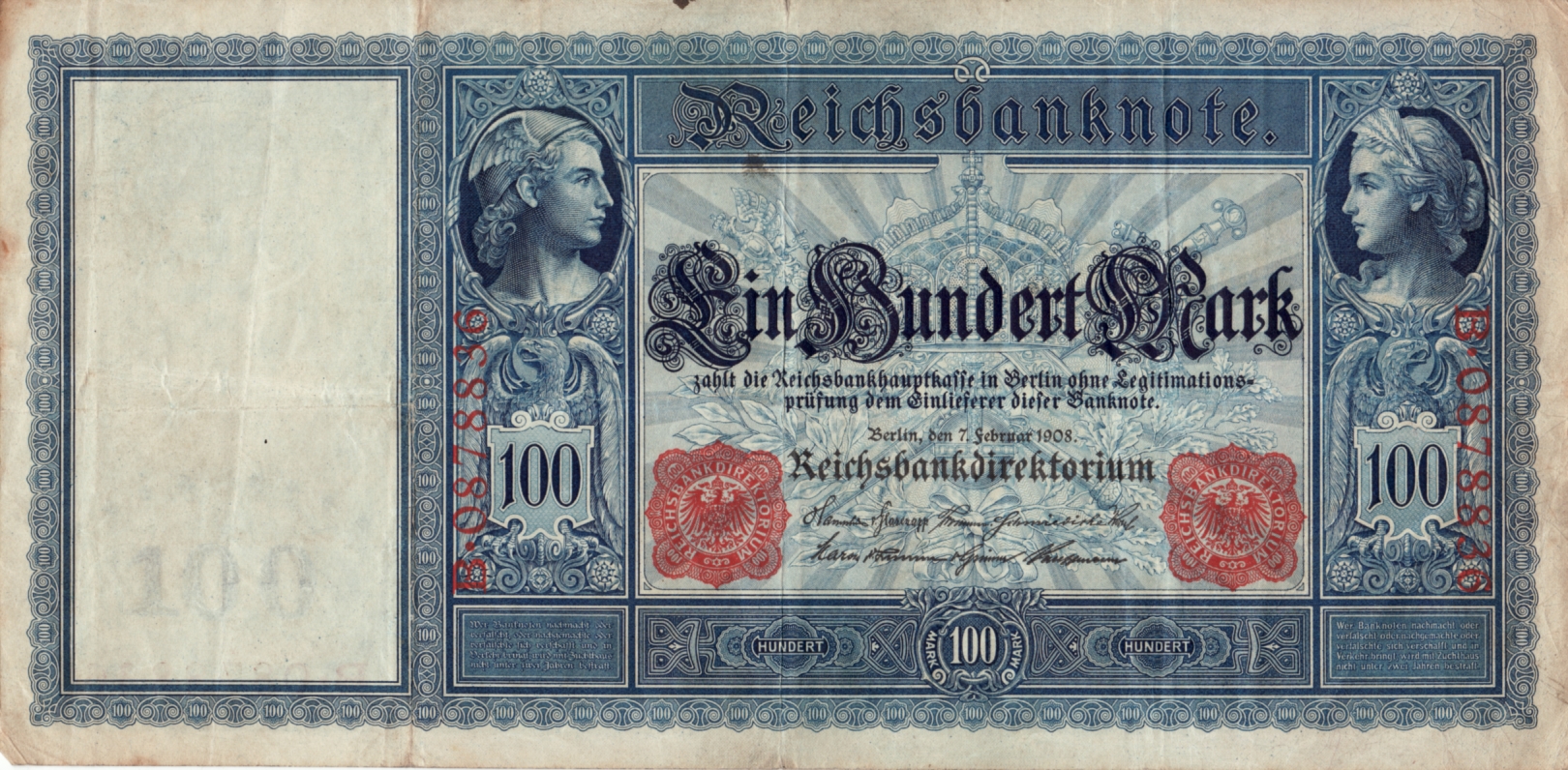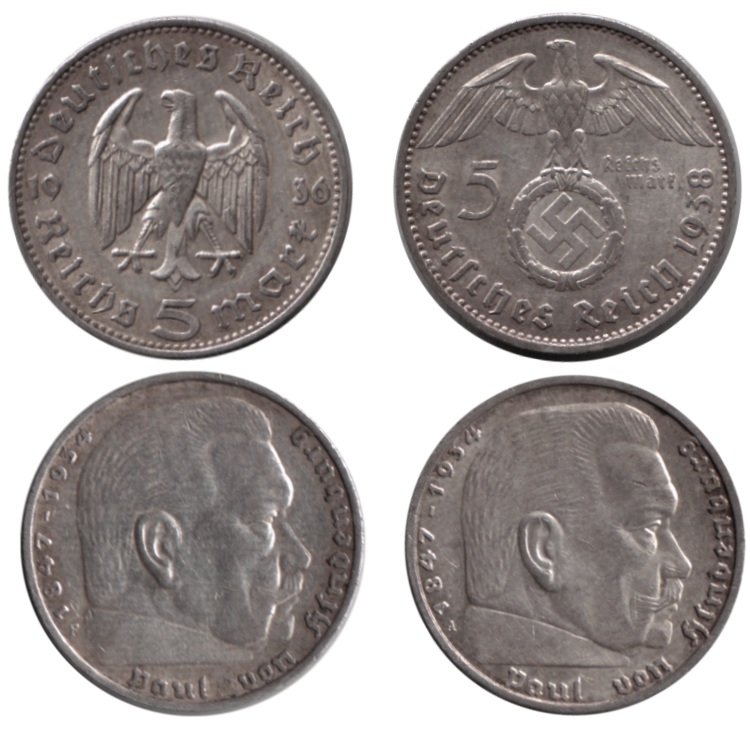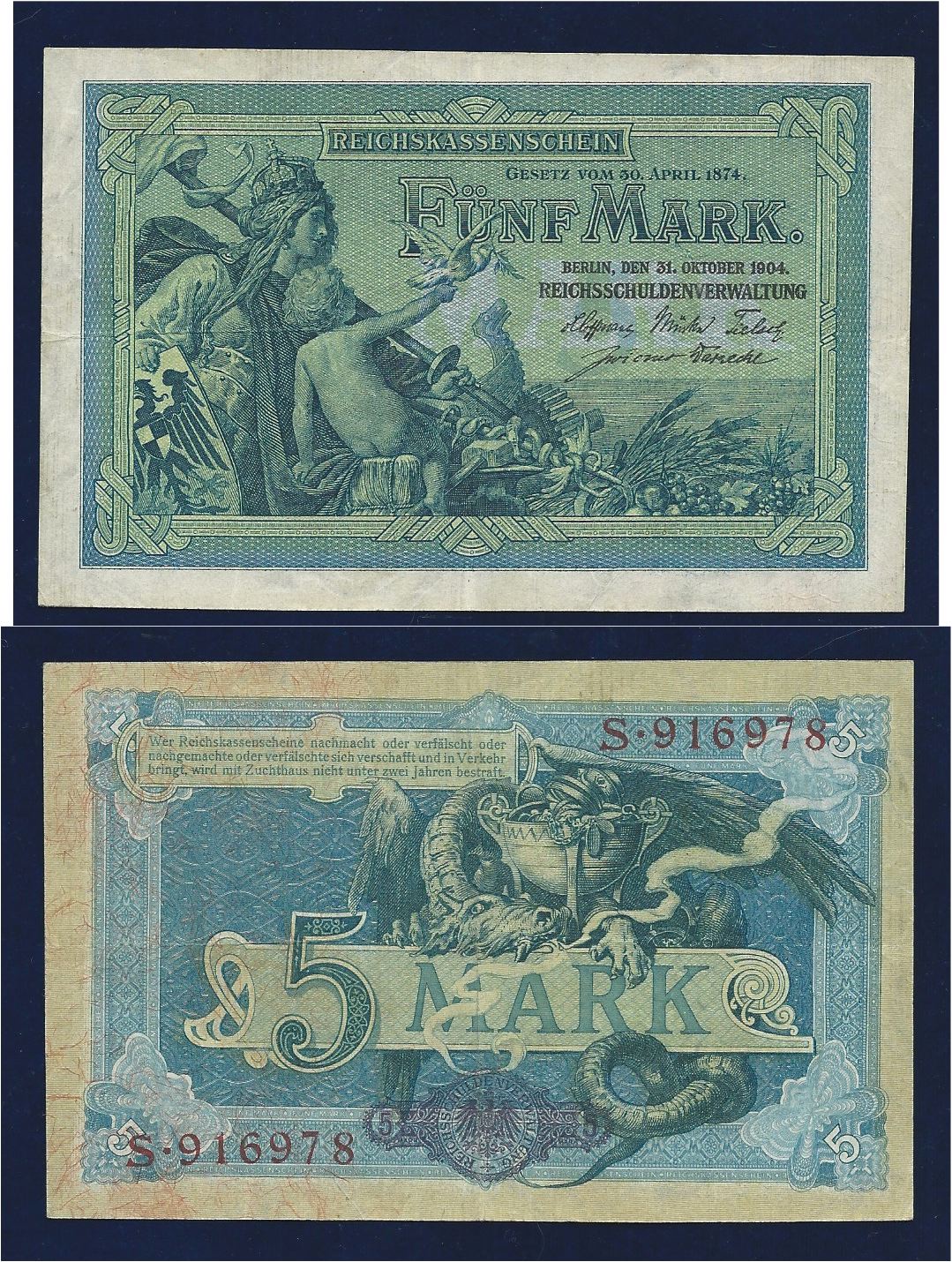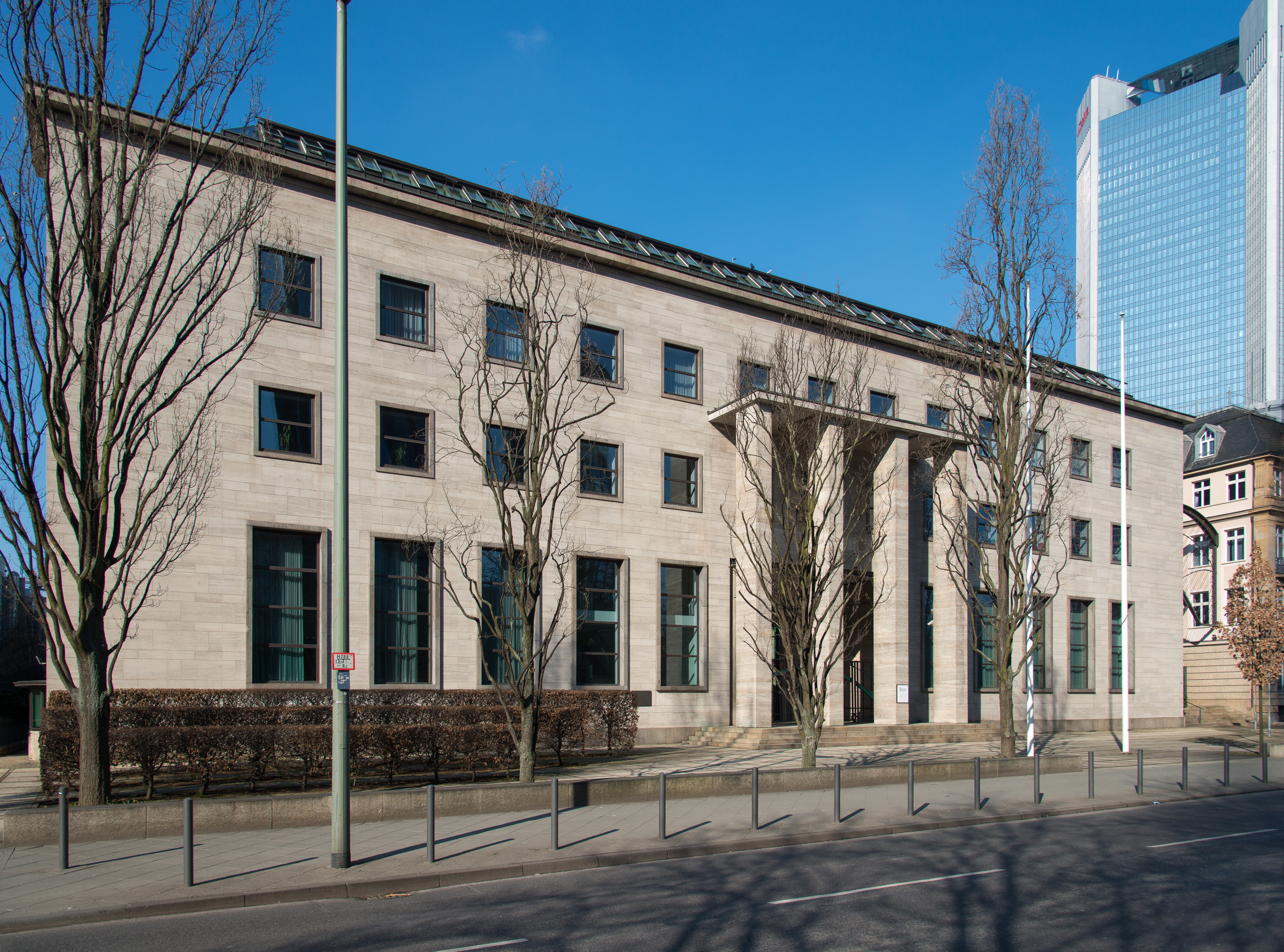|
Reichsbank
The ''Reichsbank'' (; ) was the central bank of the German Empire from 1876 until the end of Nazi Germany in 1945. Background The monetary institutions in Germany had been unsuited for its economic development for several decades before unification. In the Kingdom of Prussia, the Bank of Prussia had been established in 1847 and, in the aftermath of the German revolutions of 1848–1849, revolution of 1848, five additional banks had been granted a note-issuance privilege (the , , , at Stettin, and ), but that was still insufficient to sustain adequate monetary conditions. By 1851, 9 banks in the whole of Germany (not including Austria) were chartered to issue banknotes, known as . In addition, most German states - with the only exceptions of Principality of Lippe, Lippe and the Hanseatic cities of Free City of Bremen, Bremen, Free City of Hamburg, Hamburg and Free City of Lübeck, Lübeck - issued government paper money without the intermediation of an issuing bank. Several pan- ... [...More Info...] [...Related Items...] OR: [Wikipedia] [Google] [Baidu] |
Hjalmar Schacht
Horace Greeley Hjalmar Schacht (); 22 January 1877 – 3 June 1970) was a German economist, banker, politician, and co-founder of the German Democratic Party. He served as the Currency Commissioner and President of the Reichsbank during the Weimar Republic. He was a fierce critic of his country's post-World War I reparations obligations. He was also central in helping create the Freundeskreis der Wirtschaft, group of German industrialists and landowners that Industrielleneingabe, pushed Hindenburg to appoint the first Nazi-led government. He served in Adolf Hitler's government as President of the Central Bank (''Reichsbank'') 1933–1939 and as Minister of Economics (August 1934 – November 1937). While Schacht was for a time feted for his role in the German "Economy of Nazi Germany, economic miracle", he opposed elements of Hitler's policy of German re-armament insofar as it violated the Treaty of Versailles and (in his view) disrupted the German economy. His views in this ... [...More Info...] [...Related Items...] OR: [Wikipedia] [Google] [Baidu] |
Hans Luther
Hans Luther () (10 March 1879 – 11 May 1962) was a German politician and Chancellor of Germany for 482 days in 1925 to 1926. As Minister of Finance he helped stabilize the Mark during the hyperinflation of 1923. From 1930 to 1933, Luther was head of the Reichsbank and from 1933 to 1937 he served as German Ambassador to the United States. Early life Hans Luther was born in Berlin on 10 March 1879 into a Lutheran family as the son of Otto (1848–1912), a well-off merchant, and Wilhelmine Luther (née Hübner). After attaining the ''Abitur'' at the Leibniz-Gymnasium/Berlin, Luther studied law at Geneva, Kiel and Berlin from 1897 to 1901. His teachers included Otto von Gierke, Franz von Liszt, Heinrich Brunner, Gustav von Schmoller and Hugo Preuss. In 1904, Luther was awarded a Dr.jur. for his dissertation ''Die Zuständigkeit des Bundesrats zur Entscheidung von Thronstreitigkeiten innerhalb des Deutschen Reiches''. He passed the ''Assessor'' exam in 1906 and worked in the Pr ... [...More Info...] [...Related Items...] OR: [Wikipedia] [Google] [Baidu] |
Walther Funk
Walther Immanuel Funk (18 August 1890 – 31 May 1960) was a German economist and Nazi official who served as ''Reichsminister'' for the Economy from 1938 to 1945 and president of the Reichsbank from 1939 to 1945. Funk oversaw the mobilization of the economy for Germany's rearmament and World War II, and the expropriation of assets of victims from Nazi concentration camps. He was convicted for crimes against humanity by the Nuremberg Tribunal. Funk was a finance journalist before joining the Nazi Party in 1931 and being appointed to a senior post at the Ministry of Public Enlightenment and Propaganda. Funk was appointed as economics minister by Adolf Hitler to replace Hjalmar Schacht, as well as a member of the Council of Ministers for the Defense of the Reich and the Central Planning Board. Funk served as economics minister for nearly all of World War II until he was removed on 5 May 1945 after being left out of the Flensburg Government. Funk was tried and convicted ... [...More Info...] [...Related Items...] OR: [Wikipedia] [Google] [Baidu] |
Rudolf Havenstein
Rudolf Emil Albert Havenstein (10 March 1857 – 20 November 1923) was a German lawyer and president of the Reichsbank (German central bank) during the hyperinflation of 1921–1923. Havenstein was born in Meseritz (Międzyrzecz), Province of Posen. He came from a family of government officials and studied law in Heidelberg and Berlin. After graduation in 1876, Havenstein worked in the Prussian Justice service until 1887 when he began his career as a judge. In 1890 he moved to the Prussian Ministry of Finance. From 1900 to 1908, Havenstein was President of the Prussian State Bank. From 1908 to 1923, he was president of the Reichsbank and his signature appears on German Reichsbank notes from 1908 to 1923. Havenstein played an important part in the hyperinflationary process in Germany since he subscribed to the widespread belief then present in Germany that the inflation was caused by the fall in the external value of the mark against foreign currencies and that the role of th ... [...More Info...] [...Related Items...] OR: [Wikipedia] [Google] [Baidu] |
Reichsmark
The (; sign: ℛ︁ℳ︁; abbreviation: RM) was the currency of Germany from 1924 until the fall of Nazi Germany in 1945, and in the American, British and French occupied zones of Germany, until 20 June 1948. The Reichsmark was then replaced by the Deutsche Mark, to become the currency of West Germany and then all of Germany after the 1990 reunification. The Reichsmark was used in the Soviet occupation zone of Germany until 23 June 1948, where it was replaced by the East German mark. The Reichsmark was subdivided into 100 (Rpf or ℛ︁₰). The Mark is an ancient Germanic weight measure, traditionally a half pound, later used for several coins; (''realm'' in English) comes from the official name for the German state from 1871 to 1945, . History The Reichsmark was introduced in 1924 as a permanent replacement for the '' Papiermark''. This was necessary due to the 1920s German inflation which had reached its peak in 1923. The exchange rate between the old ''Papiermark'' ... [...More Info...] [...Related Items...] OR: [Wikipedia] [Google] [Baidu] |
Hermann Von Dechend
Hermann Friedrich Alexander Dechend, in 1865 ennobled as von Dechend (2 April 1814 – 30 April 1890), was a senior Prussian civil servant and politician who served as the first President of the Reichsbank. Biography Dechend was born in Marienwerder, West Prussia (today Kwidzyn, Poland), the son of a lawyer, Theodor Dechend. He passed his Abitur (school leaving examination) in Marienwerder and studied law and Cameralism at the universities of Berlin and Bonn. Dechend began his professional career at the local court and in the city council of Marienwerder and in 1846 moved to Arnsberg to take up a post in the administration of that Regierungsbezirk (local government district). at |
German Mark (1871)
The German mark ( ; currency sign, sign: ℳ︁) was the currency of the German Empire, which spanned from 1871 to 1918. The mark was paired with the minor unit of the pfennig (₰); 100 pfennigs were equivalent to 1 mark. The mark was on the gold standard from 1871 to 1914, but like most nations during World War I, the German Empire removed the gold backing in August 1914, and gold coins ceased to circulate. After the fall of the Empire due to the German Revolution of 1918–1919, November Revolution of 1918, the mark was succeeded by the Weimar Republic's mark, derisively referred to as the German Papiermark, Papiermark () due to hyperinflation in the Weimar Republic from 1918 to 1923. History The introduction of the German mark in 1873 was the culmination of decades-long efforts to unify the various currencies used by the German Confederation. The Zollverein unified in 1838 the Prussian and South German currencies at a fixed rate of 1 Prussian thaler = South German gu ... [...More Info...] [...Related Items...] OR: [Wikipedia] [Google] [Baidu] |
Bank Of Prussia
The Bank of Prussia () was the central bank of the Kingdom of Prussia. It was originally founded by Frederick the Great in 1765-1766 as the state-owned Prussian Royal Bank ( or ). In 1847, it was reorganized as a formally private-sector entity and renamed the Bank of Prussia. It operated until , when it was succeeded by the newly created Reichsbank. Prussian Royal Bank Frederick II founded the Royal Bank on , but it soon ran into financial trouble and had to be granted a revised charter to issue banknotes on , which is why 1766 is often referred to as its founding date; it started operations under that new guise in 1767. The bank was located at Jägerstrasse 34-35 in Berlin's Friedrichswerder district, originally only on the ground floor of a building that had been erected by architect Johann Arnold Nering in 1690 as a home for the chief huntmaster of Brandenburg. Around 1786, the bank expanded into the whole building. The Royal Bank's equity capital became negative in 1806 f ... [...More Info...] [...Related Items...] OR: [Wikipedia] [Google] [Baidu] |
Nazi Germany
Nazi Germany, officially known as the German Reich and later the Greater German Reich, was the German Reich, German state between 1933 and 1945, when Adolf Hitler and the Nazi Party controlled the country, transforming it into a Totalitarianism, totalitarian dictatorship. The Third Reich, meaning "Third Realm" or "Third Empire", referred to the Nazi claim that Nazi Germany was the successor to the earlier Holy Roman Empire (800–1806) and German Empire (1871–1918). The Third Reich, which the Nazis referred to as the Thousand-Year Reich, ended in May 1945, after 12 years, when the Allies of World War II, Allies defeated Germany and entered the capital, Berlin, End of World War II in Europe, ending World War II in Europe. After Hitler was appointed Chancellor of Germany in 1933, the Nazi Party began to eliminate political opposition and consolidate power. A 1934 German referendum confirmed Hitler as sole ''Führer'' (leader). Power was centralised in Hitler's person, an ... [...More Info...] [...Related Items...] OR: [Wikipedia] [Google] [Baidu] |
Bank Deutscher Länder
The Bank deutscher Länder (BdL, ) was a central bank established in 1948 to serve West Germany, issuing the Deutsche Mark. It was replaced in 1957 by the Deutsche Bundesbank. Background In the immediate aftermath of German defeat in 1945, the Reichsbank was placed under joint Allied custodianship pending its liquidation. In line with the Morgenthau Plan, the American authorities in November 1945 proposed a radically decentralized plan that would have organized a separate financial system in each of the , with minimal central coordination. After some hesitancy, the French authorities rallied that vision; the British authorities were initially reluctant, but gradually aligned with U.S. views following the establishment of the Bizone on . Thus, Land central banks () were created on in American-occupied Munich (for Bavaria), Stuttgart (for Württemberg-Baden), and Wiesbaden (for Hesse), followed in March by French-occupied Tübingen (for Württemberg-Hohenzollern), Freiburg im B ... [...More Info...] [...Related Items...] OR: [Wikipedia] [Google] [Baidu] |
Deutsche Notenbank
The Deutsche Notenbank () was a central bank established in 1948 to serve East Germany. It was replaced on by the Staatsbank der DDR. Overview In the immediate aftermath of German defeat in 1945, the Reichsbank was placed under joint Allied custodianship pending its liquidation. in the Soviet occupation zone, entities dubbed were established in May 1947 in each of the zone's five Provinces, namely in Potsdam for Brandenburg, Rostock for Mecklenburg, Dresden for Saxony, Halle for Saxony-Anhalt, and Erfurt for Thuringia. Each of these was fully owned and controlled by the respective provincial authorities. In 1947, newly appointed U.S. Military Governor Lucius D. Clay fostered the creation of a German central bank. An agreement on that concept was reached among the three Western occupying forces on , resulting in the establishment on of the Bank deutscher Länder. On , the Soviet occupation authorities replied by establishing a in Potsdam, which was renamed the Deutsche No ... [...More Info...] [...Related Items...] OR: [Wikipedia] [Google] [Baidu] |
Oesterreichische Nationalbank
The (, , abbr. ) is the National central bank (Eurosystem), national central bank for Austria within the Eurosystem. It was the Austrian central bank from 1923 to 1938 and from 1945 to 1998, issuing the Austrian schilling, shilling. It started operations on under the economic assistance provided to Austria by the Economic and Financial Organization of the League of Nations, replacing the Austro-Hungarian Bank with its name recalling that of the Austro-Hungarian Bank's predecessor entity founded in 1816. It was liquidated following the Anschluss in March 1938, and re-established in July 1945. The OeNB is a Aktiengesellschaft, joint-stock corporation governed by special legislative provision. Its entire capital of €12 million has been held by the Austrian federal government since May 2010, with shareholder rights exercised by the Minister of Finance. Before 2010, half of the capital was in the hands of employer and employee organizations as well as banks and insurance ... [...More Info...] [...Related Items...] OR: [Wikipedia] [Google] [Baidu] |





